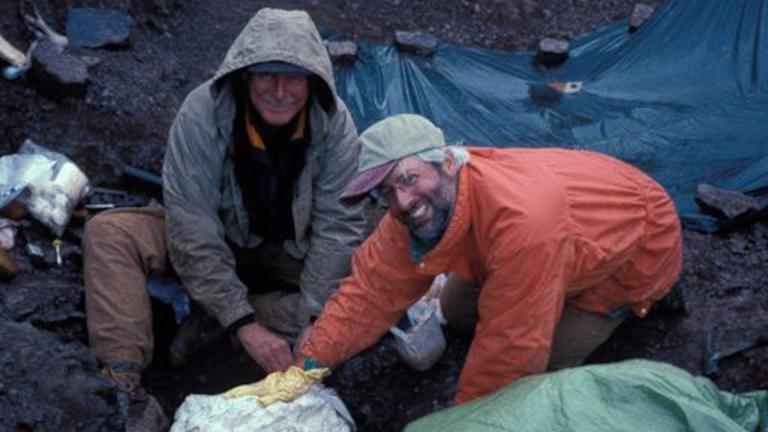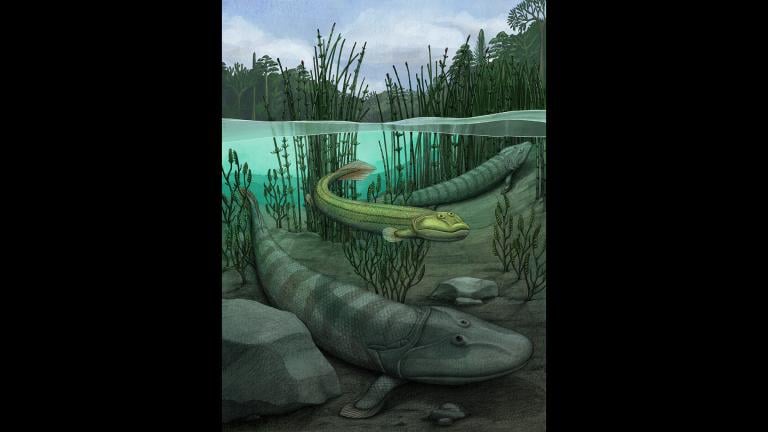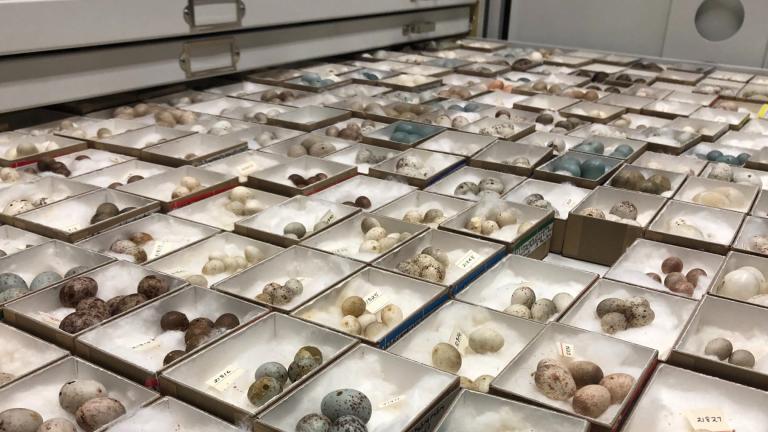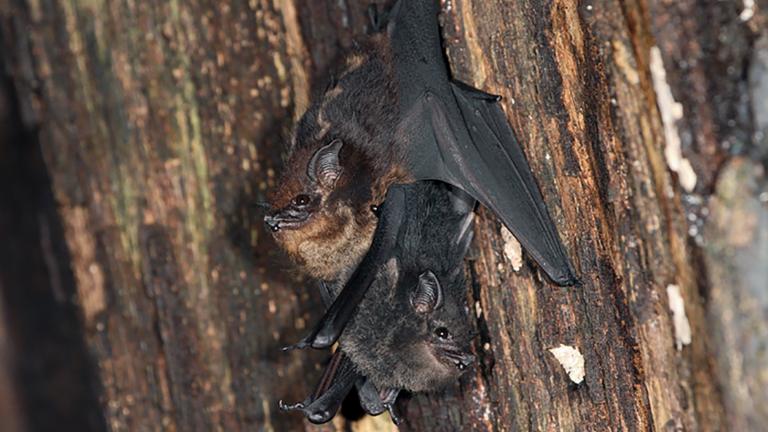Northwestern Medicine researchers discover a cause of baldness in mice. Scientists probe the atmosphere of a distant exoplanet. A study of the pelvis of a saber-toothed tiger reveals the caring side of an extinct big cat. And how mass poaching has led to tuskless elephants in Mozambique.
University of Chicago paleontologist Neil Shubin returns to help us understand some of the latest science stories making headlines.
Of Balding Mice, Men and Women
Scientists at Northwestern Medicine have discovered a cause of balding in mice that could have implications for treatments of hair loss in men and women.
The study, published in Nature Aging in October, shows that as hair stem cells age, they lose the stickiness that keeps them lodged inside the hair follicle.
Once the stem cells are outside the delicate microenvironment of the follicle, they generally perish.
“The result is fewer and fewer stem cells in the hair follicle to produce hair,” said lead author Rui Yi, the Paul E. Steiner research professor of pathology at Northwestern University Feinberg School of Medicine. “This results in thinning hair and ultimately baldness during aging.”
The research could have implications for treatments for men and women with hair loss because there are many similarities between mice and humans in hair and stem cells, Yi said.
Scientists Probe Atmosphere of Distant Exoplanet
A team of scientists has used a new technique to measure the amount of water and carbon monoxide in the atmosphere of a distant exoplanet some 340 million light years away.
It is the first time that scientists have had the ability to accurately measure “the actual amounts of molecules in the atmosphere of such a distant planet,” according to a news release from the University of Chicago.
It is hoped that the new technique will enhance the search for extraterrestrial life.
“This opens up a whole new window into planetary atmospheres,” said study co-author Jacob Bean, an associate professor of astronomy and astrophysics at the University of Chicago. “Previously, we could tell whether there were certain molecules, but not how many, and that makes a huge difference. It’s like being able to see the entire iceberg, not just what’s above water.”
Saber-Toothed Cat’s Caring Side
Researchers studying the bones of saber-toothed tigers at La Brea Tar Pits in Los Angeles have found a caring side to the extinct big cats.
Using a CAT scan to create a 3D image of the pelvis of one of the cats, the researchers discovered that the cat had congenital hip dysplasia. The team concluded that the mature cat could not have survived on its own.
“In this case, our animal sustained a developmental condition (not an injury) and was able to live to adulthood – suggesting that it must have received support, perhaps by food-sharing with its family,” says Dr. Mairin Balisi, a postdoctoral fellow at La Brea Tar Pits.
Poaching Leads to Tuskless Elephants
Mass poaching of elephants for their ivory has led to the development of tuskless elephants in Mozambique.
A rare genetic mutation can cause elephants to not have tusks. Researchers studying elephants in Gornogosa National Park in Mozambique found that the impact of civil war from 1977 to 1992 in which both sides slaughtered elephants for their ivory to finance their war effort had led to an increase in tuskless elephants, as they were not targeted by poachers.
“One of the conspicuous features is that a lot of the female elephants don’t have tusks and we were getting intrigued by this phenomenon,” said Robert Pringle of the department of ecology and evolutionary biology at Princeton University. “We realized that although there had been a fair amount written with people observing the fact that elephants were sometimes tuskless, especially in places where there had been a lot of poaching, nobody really understood why.”








